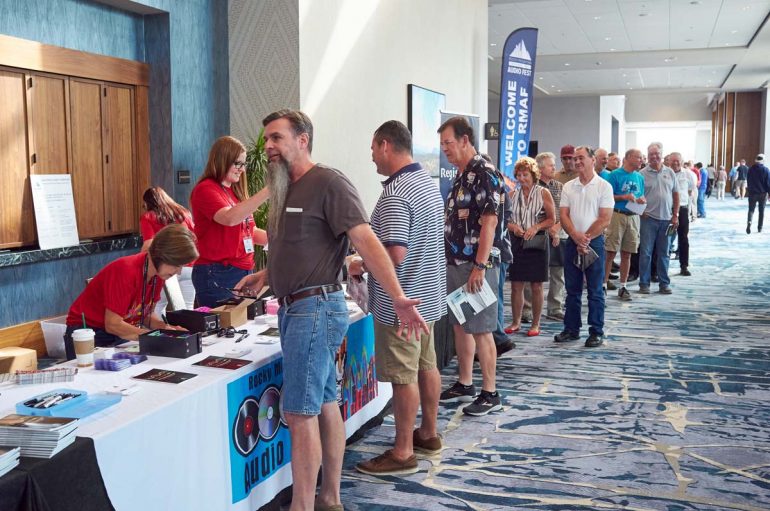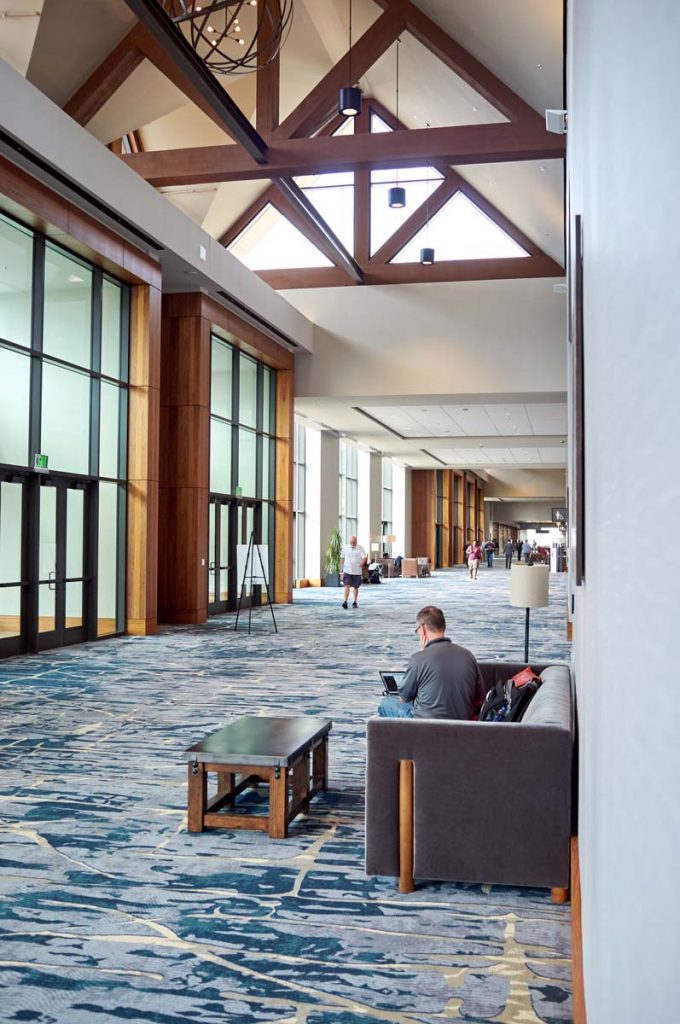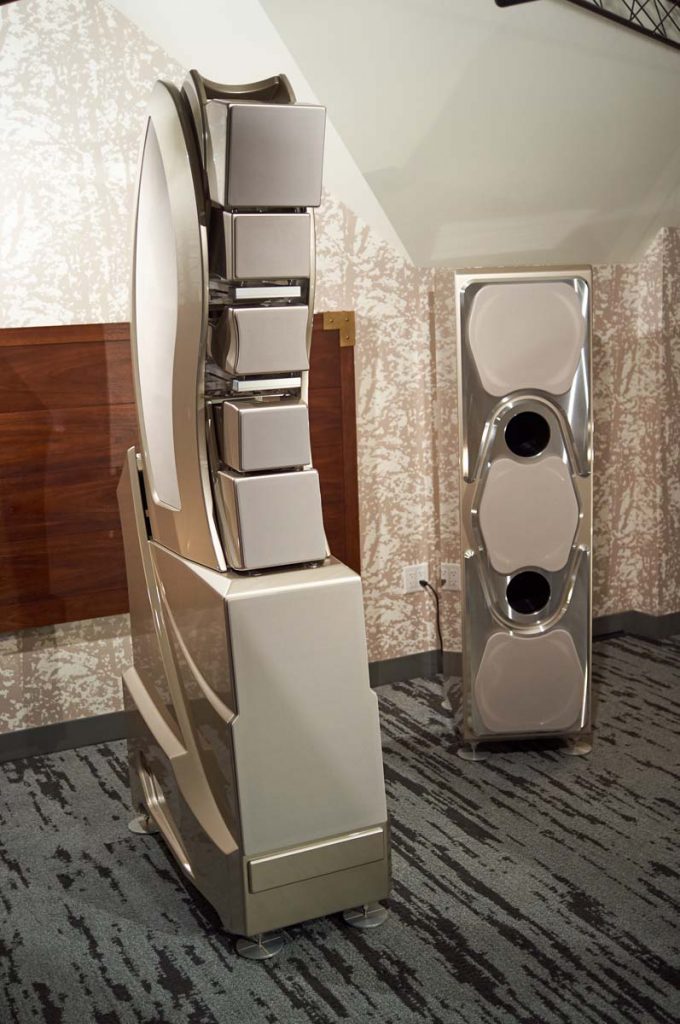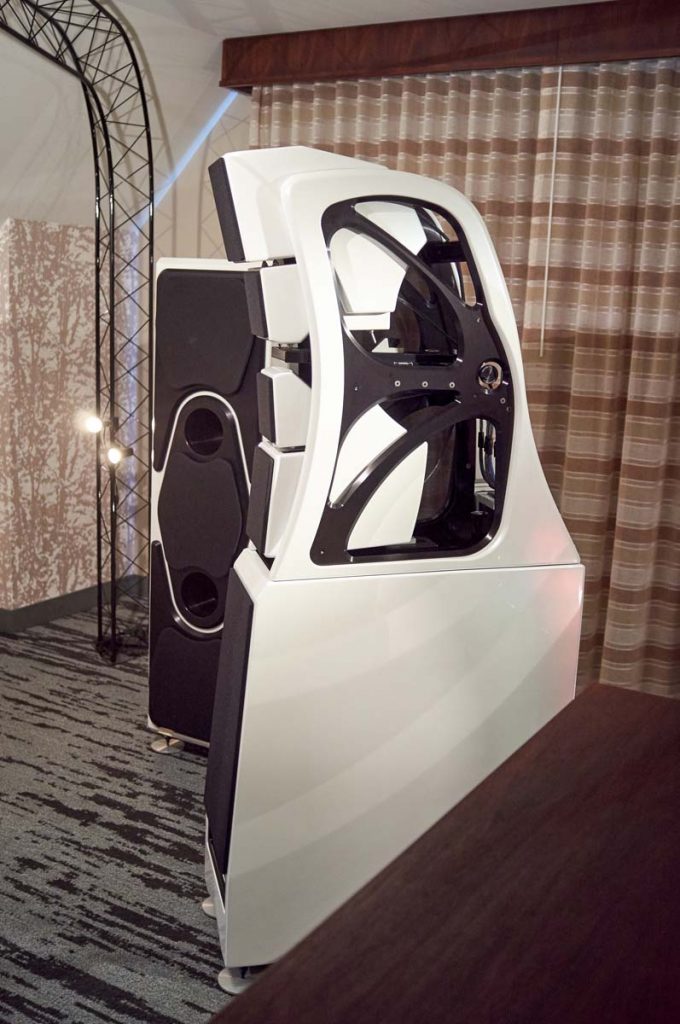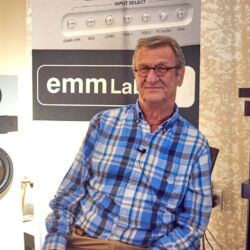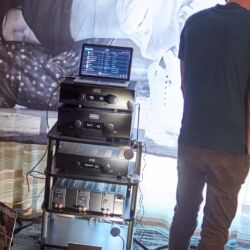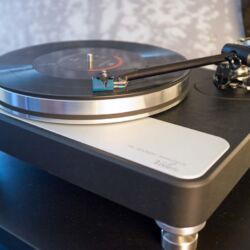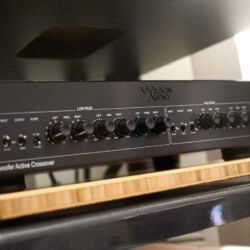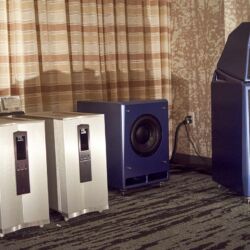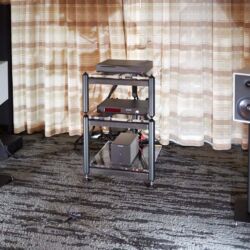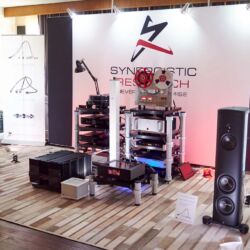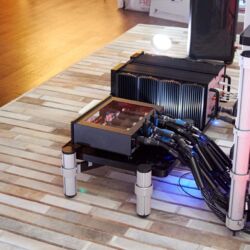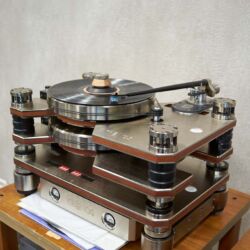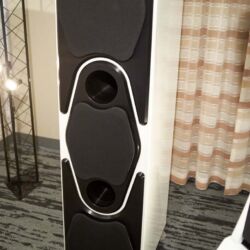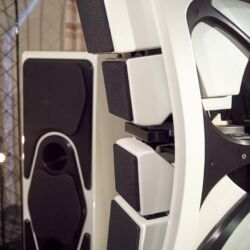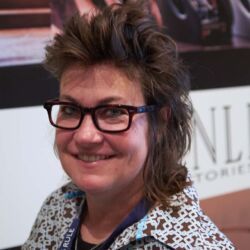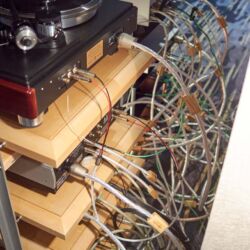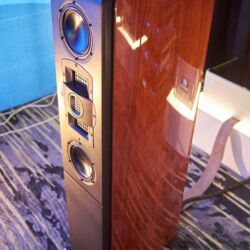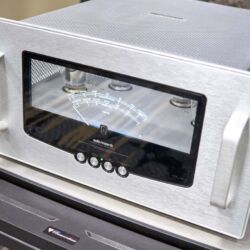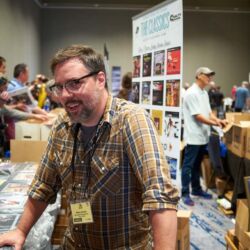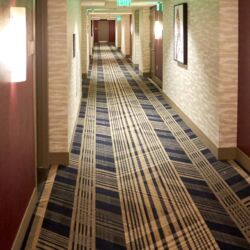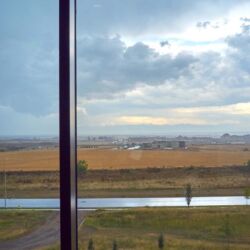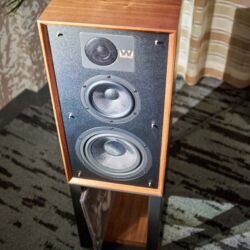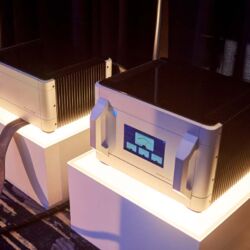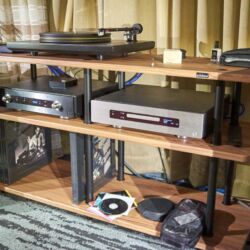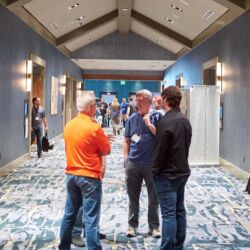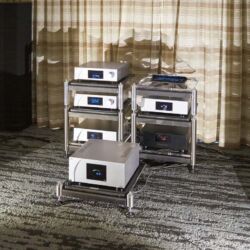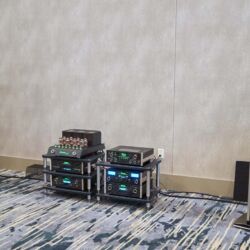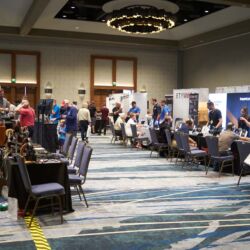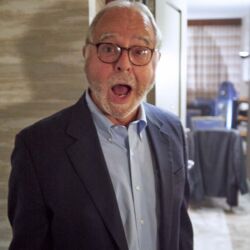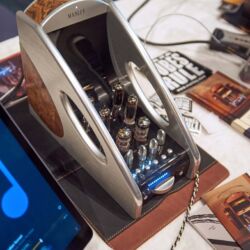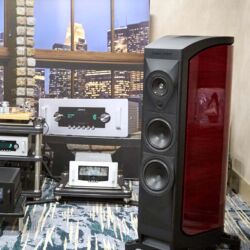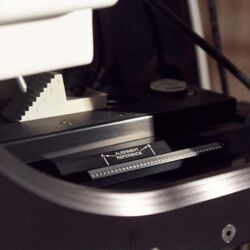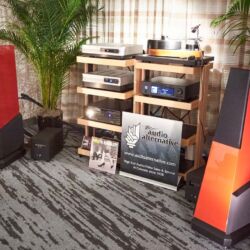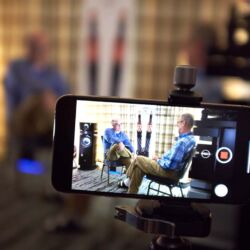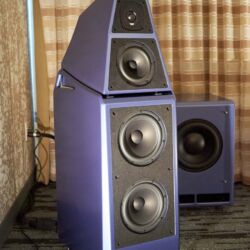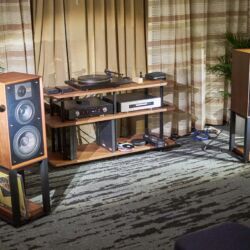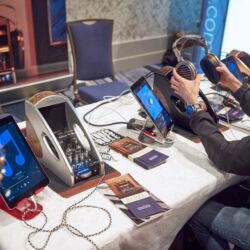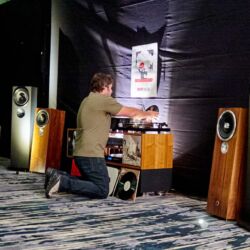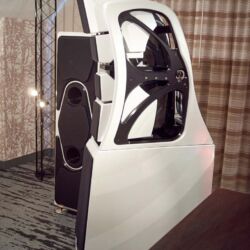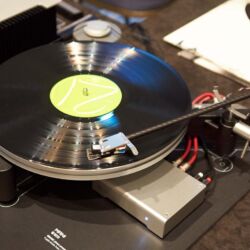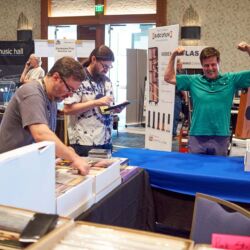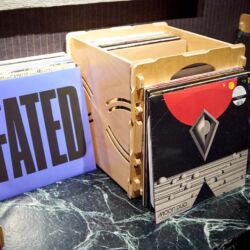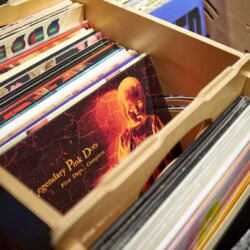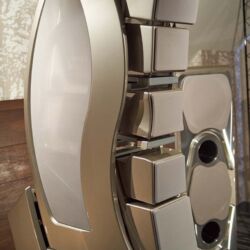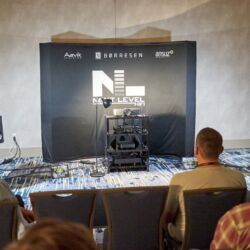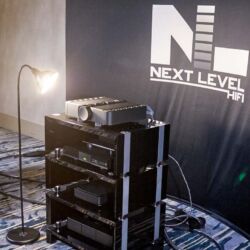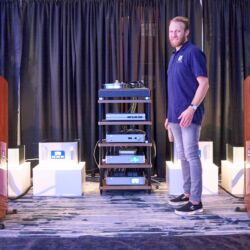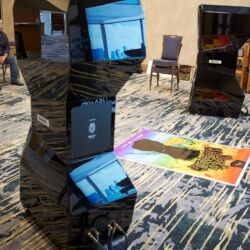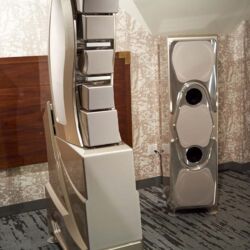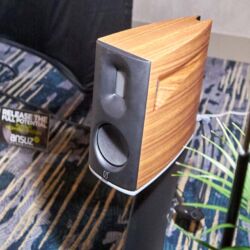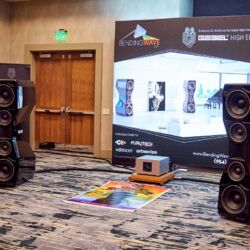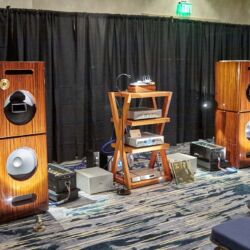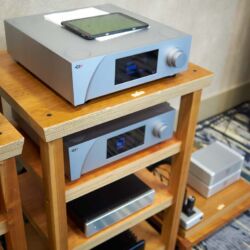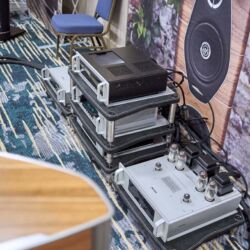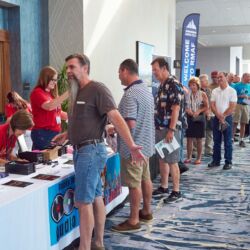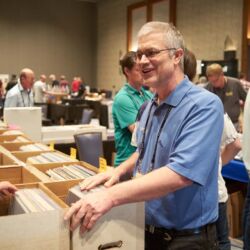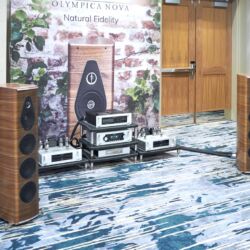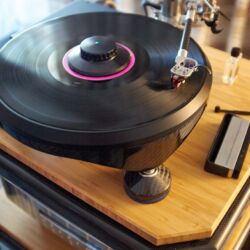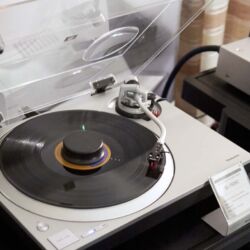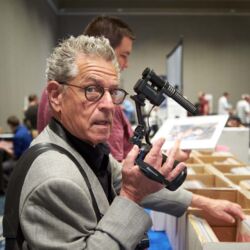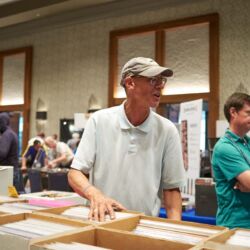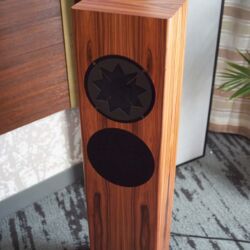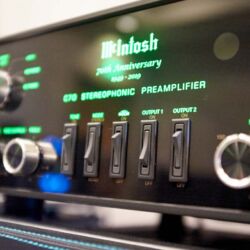The new hotel for the Rocky Mountain Audio Fest (RMAF) proved to be the right decision
My upgrade to 1st didn’t work this time. Bummer, I thought. Then again, it’s really only a 2h flight from sunny SoCal to RMAF, for my 12th-ish trek to the annual Rocky Mountain Audiofest.
Photos: Danny Kaey
Marjorie Baumert, the show’s Director and owner, was in for something altogether new, newer and most new. Ditching the show’s first home, the Denver Marriott Tech Center for the newly built monstrosity of a “hotel”, the Rocky Mountain Gaylord resort and convention center, a short 15-ish minute ride from the airport, we all were in for something genuinely new. Billed as a billion dollar (!) resort with 1501 rooms, miles and miles of open spaces, 8 restaurants, amenities second only to some fancy Las Vegas resort, this is the new home of the Audiofest, at least for the next few years. What will change – what the hotel simply couldn’t accommodate this time around – is that the show in 2020, will in fact move back to its original showing in early October. A good way to start a new decade I suppose.
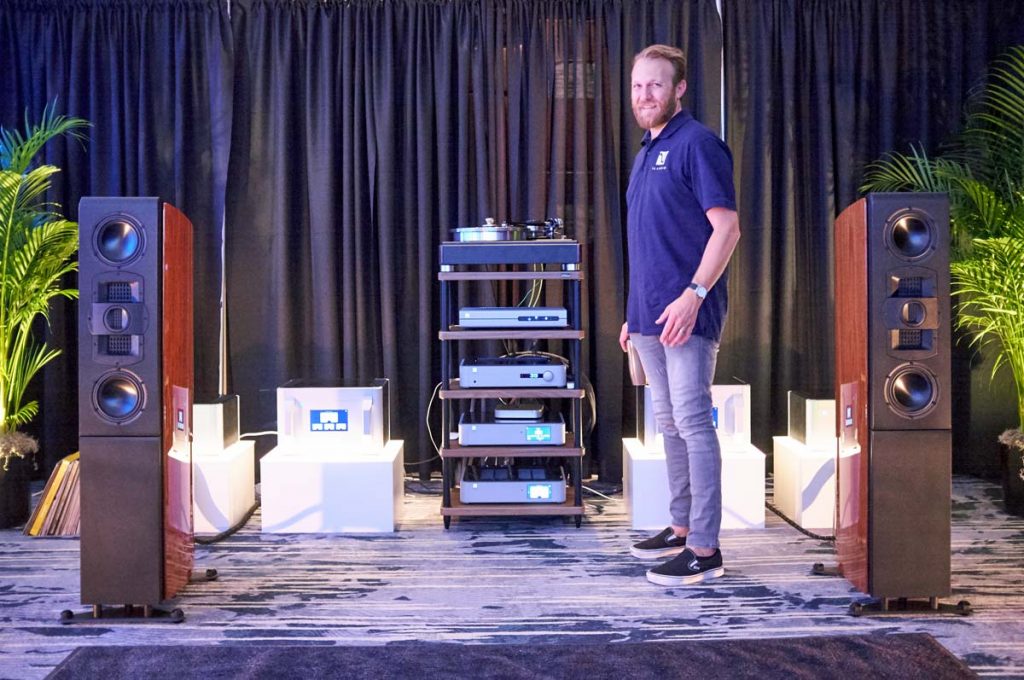
Naturally, anytime a big, nay, major move like this happens, expectations run rampant, especially considering that the hotel hosting the venue is essentially brand new, only having opened for guests and full-time operations earlier this year in January. In many ways the show and hotel didn’t really disappoint, though quibbles and typical organizational stuff aside, the main theme circling my head simply wouldn’t leave. Are these shows really necessary for the beginning of the third decade in this new millennium? At least the way they are organized in their current form, followers of my writing surely recognize this ear worm, since I have been eluding to it three or four years running. But, back to the Rocky Mountain Audiofest. Judging from the tremendous presence of the press, show reports galore went spinning up the interwebs practically on the hour, by the hour. Video crews and Vloggers – I must have counted a dozen (!) at least – added yet another element to the multi-media-ish spectacle this year. While I had originally intended to cover the show as Spielberg style videographer myself, technical quibbles with my gear ultimate prevented me from doing so with the exception of a few stationary interviews. Fine, I thought. Less stress, less this and that, I thought. Surely, while I was stress free for all three days at the show, I must have racked up more miles traversing the hallways each day than at any show before, save for the occasional CES outing of year’s past.
The resort’s show was essentially split into two separate sections: the East and West wing, or the convention center and hotel rooms, floors 3-11. While I was expecting more in the way of showrooms or traffic for that matter, the rooms I did visit proved full, vibrant and generally good sounding. Other than my quick in-n-out visits just to say hello, the show really started at 1PM sharp, courtesy of an invitation to Wilson Audio’s suite on the 11th floor. All hands-on deck, Daryl Wilson, Wilson Audio’s bona fide, smart and genuinely warm and welcoming CEO, offered up his company’s latest announcements. First and foremost, the newest flagship loudspeaker, the XVX, as well as the company’s stereo sub crossover controller for single or twin sub configurations. Though I was privileged to see (and hear!) XVX first-hand during a brief visit to Salt Lake City the week before, the press announcement served as the de facto formal worldwide launch for this new flagship speaker system. More than two years in the making, XVX is Daryl Wilson and team’s full on assault at the state of the art, the best of the best, the crème de la crème. And a statement it truly is. Borrowing heavily from design cues first seen with his father’s Mangum Opus, the WAMM of 2017, the family resemblance is instantly recognized. Dare I say that this is Wilson Audio’s new design theme, which no doubt will be carried forward for products in years to come. Bold, magnetic, spectacular, XVX is nothing short of a genuine statement product. Think Bugatti Chiron, McLaren P-1, Rolls-Royce Wraith. Offering up and retaining WAMM’s twin Master Chronosonic Micrometer adjustment system, the all new superstructure atop of the twin woofer’d bass cabinet, contains the MTMM upper driver array, including an all new Alnico magnet driven mid-range driver. From the execution of the form, notice the aligned curves of the superstructure, to the latest generation Wilson materials, to a genuinely brilliantly integrated lighting system, XVX, especially dressed in the latest WilsonGloss Premium Pearl Saffron color, is truly breathtaking.
Though we didn’t get to hear XVX – it was a static display model only – I can confirm from personal experience with a late pre-production model mono channel XVX I heard side-by-side with a mono channel XLF Series 2, that XVX plays in an altogether different league compared to Wilson’s previous flagship. Far more presence, depth (yes, easily heard in mono) and resolution ought to completely surpass everything Wilson had on offer before, with the exception of the limited production run WAMM system. Clocking in at $329k, XVX is a marked jump in price compared to XLF Series 2; then again, it is less than half the cost of WAMM. Further, where WAMM with the addition of one extra driver in its superstructure, is just a smidgen too tall for certain Asian markets, XVX standing right at 6’4’’ (coincidentally, Daryl Wilson’s height) should fit in just about any willing and able household. Definitely the talk of the show every single day, from elevator talk to hallway talk to “pro” talk amongst the exhibitors.
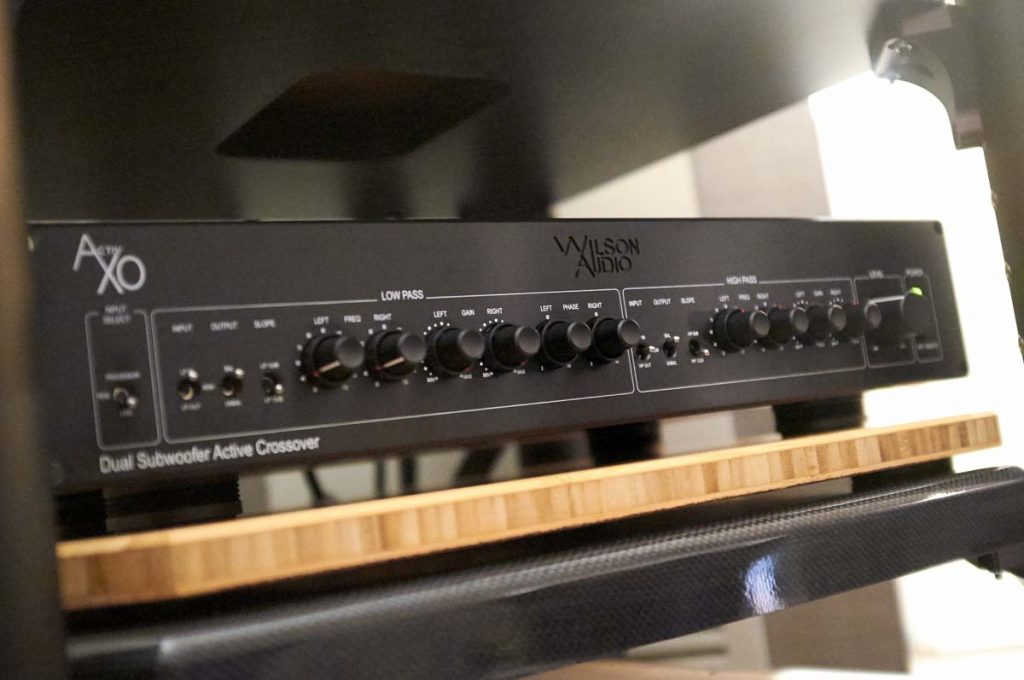
The other announcement at the Rocky Mountain Audiofest was active however, that being Wilson’s custom in house built all new stereo subwoofer crossover controller, ActivXO. Leashed to a complement of VTL top end gear and a dCS Vivaldi One, Daryl’s other hit, DAW, was on display with two gorgeously matched matt blue twin WATCH Dogs. Expertly setup by the one and only – the incomparable – Peter McGrath, DAW avec WATCH Dogs proved to be the other talk of town. Playing Peter’s own recordings as well as typical show favorites courtesy of Peter’s vast playlist, the sound in this room was the best of all hotel rooms, bar none. Tight, expansive, dynamic; resolved and open, this speaker system was something I would easily take home and never feel the need to swap for anything else, even as further improvements would easily manifest themselves given a larger room and more air to breathe. Sunday morning as I was leaving, I briefly ran into a fellow colleague who said that the Wilson room was essentially standing room only Friday and Saturday. Not surprised in the least.
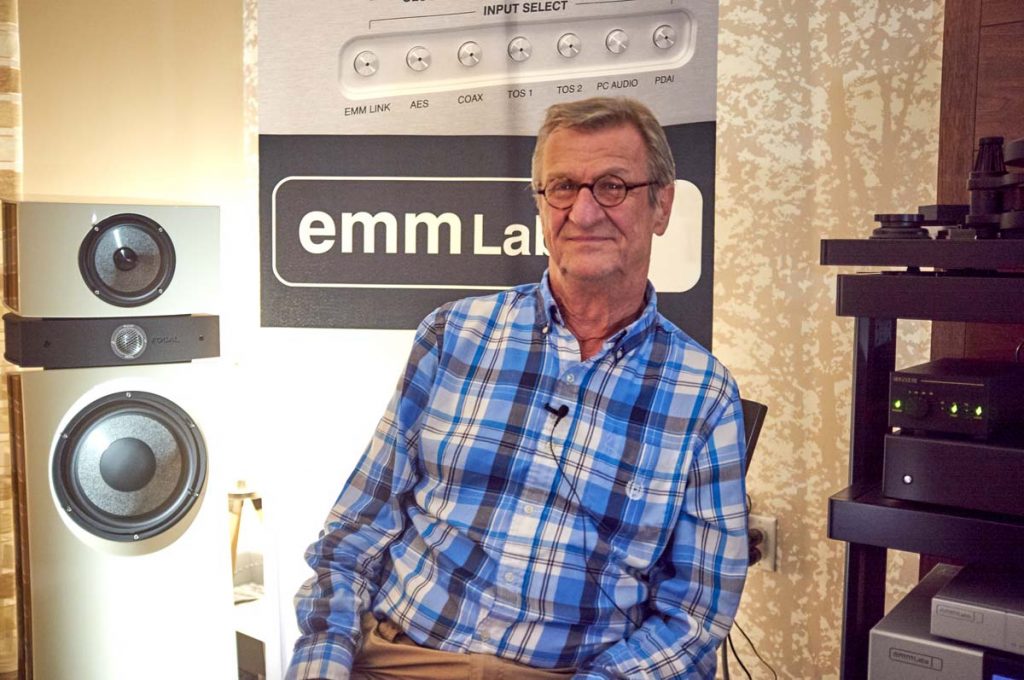
Elsewhere on the room side of the show you easily found all other players, movers and shakers. Ed Meitner, long time digital honcho and genuine leader of digital developments over the last 40 odd years, used Audiofest to announce his return to analog with a phono preamp made exclusively under license from DS Audio for their optical range of phono cartridges. Mated to an SME 15 deck, the pre-production proto-box sounded rather magical indeed. Leashed to a full complement of emmLabs power and pre-amp combo via Focal floor standers, I can easily see, nay, hear the benefits of this optical cartridge system: bold, dynamic, wide open, the sound was distinctly attractive and memorable. No doubt something to look out for early next year when this exclusive phono preamp is supposed to launch. Walter Swanbon, proprietor of FidelisAV, partnered with CH Precision to show off Stenheim’s Alumine 5, which he had previously used to great acclaim during the Axpona show with EINSTEIN in toe. Compared to that setup, the CH/Stenheim combo seems more analytical sounding, with a distinct solid-state sort sound that definitely drew crowds throughout Friday and Saturday.
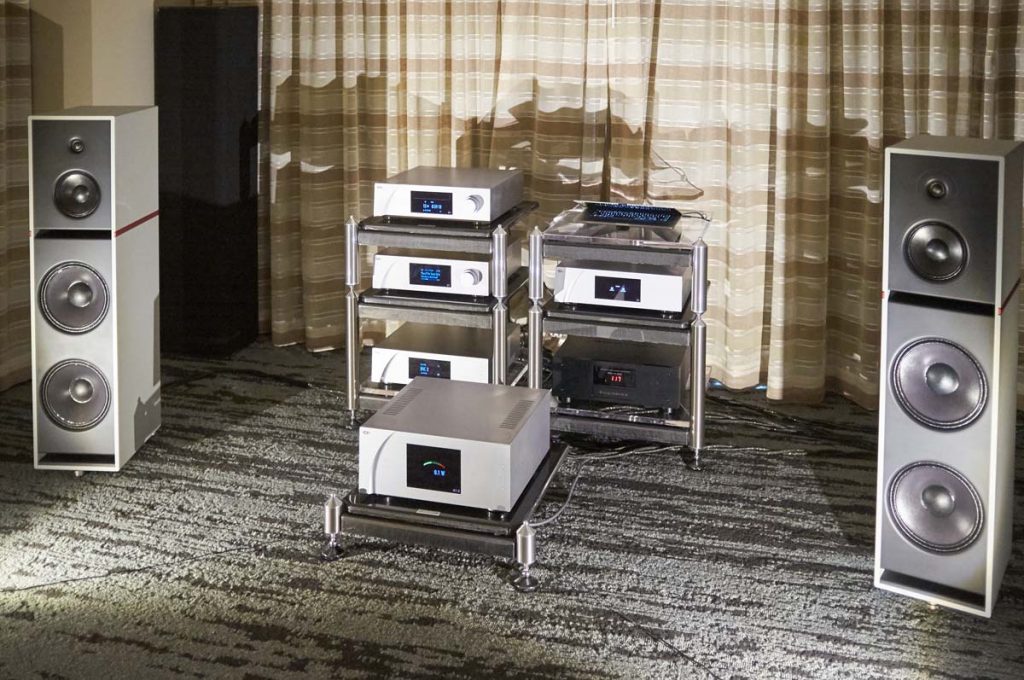
Dashing across the entirety of the Gaylord, you found more exhibitors in the larger ball-room type setups. On the far-end left was the now famous market place, where Acoustic Sounds, Elusive Disc, to name a few of the larger retailers, setup shop. In between the records – both pre-owned and new, CDs, SACDs and other nick-knacks, where two-odd dozen smaller mom-pop shops selling record cleaning machines, turntables, reel-to-reel machines and all sorts of other audio accessories.
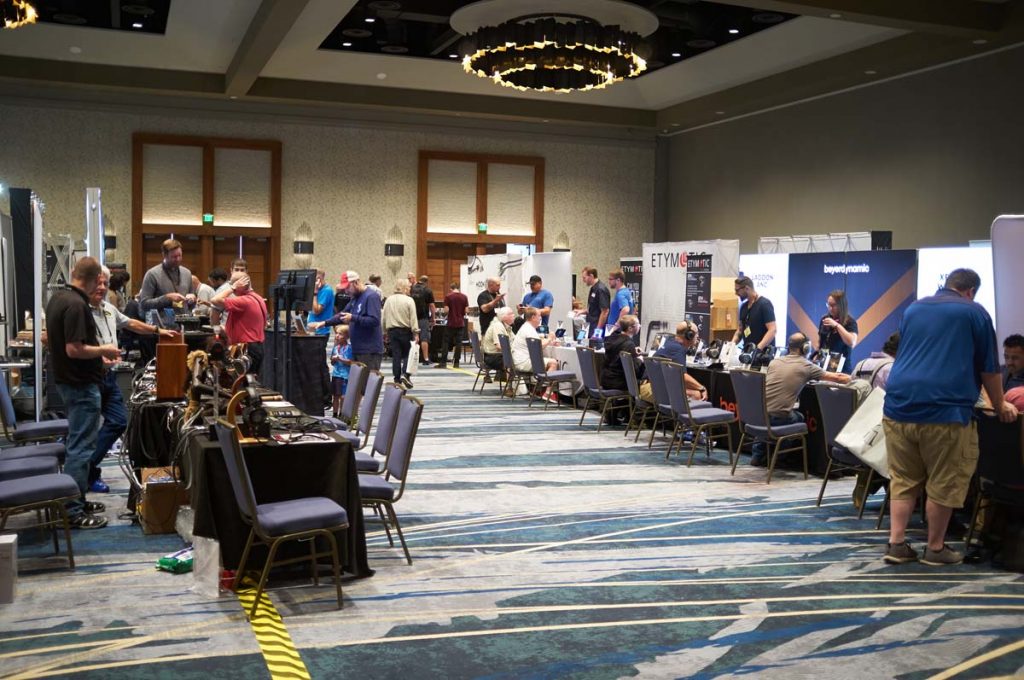
Immediately next door was Audiofest’s new headphone hall, which featured just about every headphone and headphone amplifier manufacturer you could shake a stick at. Visiting these cousins of HiFi is always a hoot, for you will find everything from truly bespoke to everything in between. This was my first time listening to Meze’s highly acclaimed Empyrean headphones which boggled my mind. Exquisitely crafted from the finest materials, these cans truly sounded spectacular and will no doubt warrant further, more detailed, examination by yours truly in the coming months at chez K.
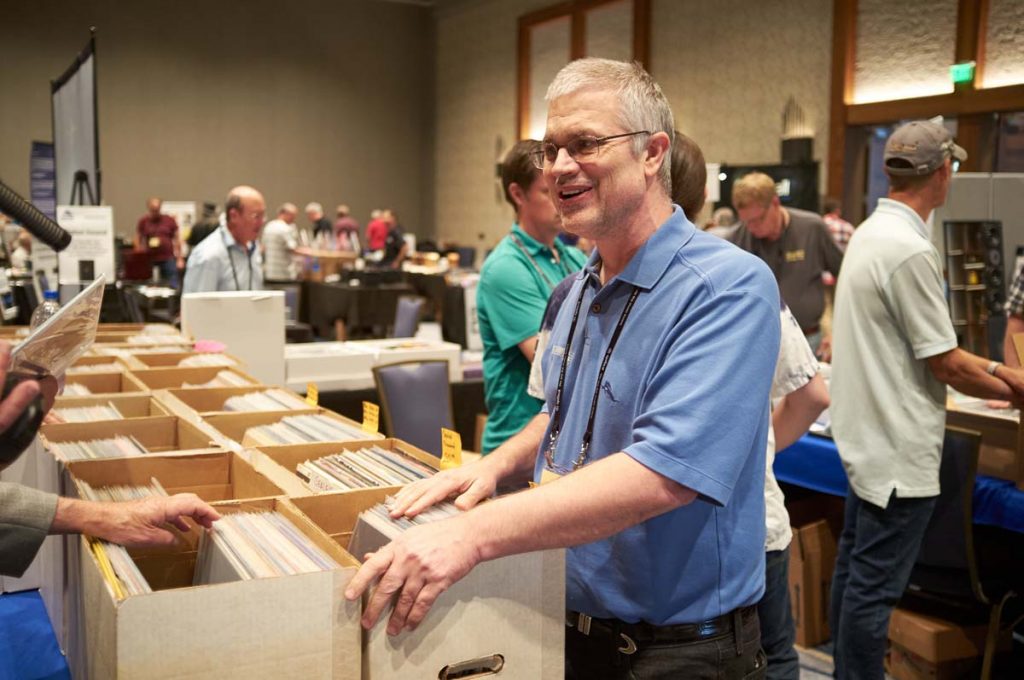
Chad Kassem, Acoustic Sounds, brought along a test pressing of an upcoming new release, a Tennessee Ernie Ford album, that was so incredibly goosebumps inducing life-like, that every single person in the room practically gave a standing ovation at the end of track 1. A truly memorable experience at Audiofest 2019.
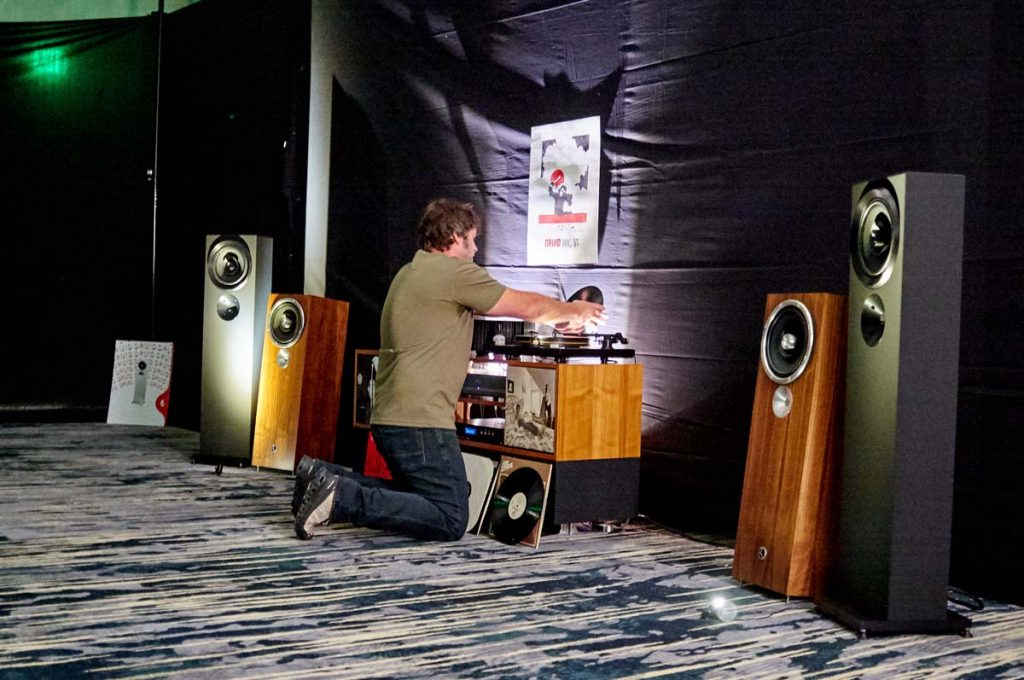
Cueing up a few hallways over, you found Sean Casey and Gerrit Koer of Zu Audio, with their now legendary setup of a Druid VI, Pass Labs and Mobile Fidelity / Technics deck’d HiFi rig. Playing music that you really only hear at Zu, the sound was at once involving, dramatic and Zu like. With the all-new Druid VI, Sean really ratcheted up development of the house-sound. Far more detailed, far more resolved than any previous generation Druid, model VI is really an entirely new platform full of intricate design details and solutions that simply weren’t possible with any prior model. Judging by the ever-increasing press coverage and accolades Zu is getting from the high-end press, I’d wager that many an audiophile previously unfamiliar with Zu is now well versed on Sean Casey’s designs. Definitely a stand-out room on that side of the Gaylord!
Departing Sunday morning from the Rocky Mountain Audiofest, I left the show enthused, yet somewhat perplexed at the same time. Overall, the show did what a HiFi show does: draw attention to a largely bespoke, niche industry in need of mass-market appeal. Add an all new – unfamiliar – venue and exhibitor attendance prices that have gone by at least double compared to year’s prior and you have the makings of a perfect storm. Audiofest has now defacto grown-up and is no longer that small startup it once was. With that come expectations that are increasingly more challenging to meet or even exceed in this demanding market place we call HiFi. As I have said so many times before, I admire Marjorie and team greatly for the resolve, resilience and never ending, nay, limitless enthusiasm they bring to the show each and every year. Likewise, I’d also wager that there is yet more room to grow and if not reinvent the wheel, perhaps add more layers to it with a twist, so to speak. Stay tuned for Rocky Mountain Audiofest 2020, which, back in its old timeslot, October, will undoubtedly be bigger, better, badder than this year’s show.

